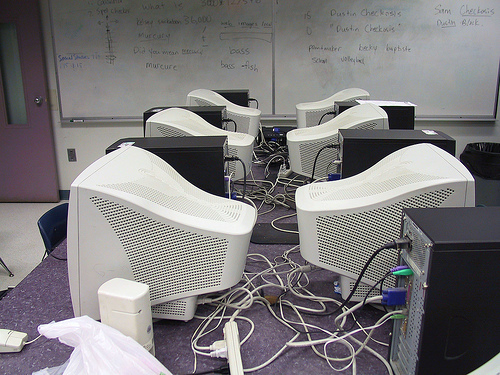Digital learning offers great potential for addressing two of Kentucky’s greatest education needs: high costs and dropout rates, says a new Bluegrass Institute report.
“We’re going to have to challenge ourselves to look beyond the traditional learning environment to cost-effective, real-world learning that prepares students for future horizons,” said state Rep. Addia Wuchner (R-Florence), an Education Committee member. “Today’s students are digital natives. They’re smart and capable of learning in non-traditional environments.”
The Barren Academy of Virtual and Expanded Learning (BAVEL) in southern Kentucky accepts students from anywhere in the state. It allows students to achieve their degree entirely online or take classes their traditional public school doesn’t offer, including Advanced Placement courses.
Many of BAVEL’s 110 students were previously at risk of dropping out, but now graduate and attend college. Last year, 95 percent of eligible BAVEL students graduated, while its eleventh graders scored far above other at-risk Kentucky students on the ACT.
Even so, policymakers still hardly know BAVEL exists, said report author and Bluegrass Institute education analyst Richard Innes.
Overcoming Funding Obstacles
Like many educational alternatives, online learning providers receive a fraction of the state’s per-pupil spending in traditional schools.
When a student transfers to BAVEL, the academy receives $3,662 of the $9,962 public schools receive per student. This money only follows students to BAVEL if their district agrees to release them.
“The money we appropriate for the student needs to follow that student,” Wuchner said. “That being said, there’s some ways [for funding] to be a win-win.”
Wuchner suggested allowing districts to keep 25 percent of state funding when a student transfers to a digital school, with the other 75 percent following the student, to ease challenges for local officials who budget by student population.
BAVEL nets equal or better results than the average Kentucky school for 37 percent of the cost. Digital learning proponents hope legislators support this efficient, effective model when attending the state’s burgeoning budget crisis and stubborn dropout problems, Innes said.
Altering Education Structures
Dewey Hensley oversees a new state department charged with turning around Kentucky’s failing schools. Virtual learning is vital to these efforts, Hensley said.
“If you want to provide access to everyone, you have to think innovatively,” Hensley said.
Conner High School in northern Kentucky is one of the state’s best-performing school districts, and eight of its 1,300 students have begun taking some classes online. Superintendent Randy Poe said students may learn some courses better online, and that digital learning is “changing the face of education.”
Administrators need credible information on digital programs, better hardware and software, and to address security and bandwidth concerns, the report says.
A summer survey of Kentucky teachers revealed that Internet connectivity and bandwidth prevents attempts to incorporate technology into teaching. Some schools only have dial-up Internet, “which can’t support decent programs,” Innes said.
Internet Info
“Digital Learning Now,” by Richard Innes, the Bluegrass Institute: www.freedomkentucky.org/images/8/80/DigitalLearningNow.pdf
Image by Scott Woods-Fehr.




